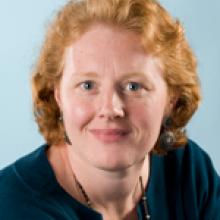The Connecticut Green Bank is a proud sponsor of the BuildingEnergy NYC Conference. NESEA’s mission of advancing sustainable energy practices in the built environment strongly aligns with the Green Bank’s mission of accelerating clean energy deployment across residential (single and multifamily), commercial, industrial, and institutional sectors. We provide financing for high performance buildings by leveraging limited public funds to attract private capital investments.
As Director of the Green Bank’s multifamily programs, I encourage owners and service providers to think broadly and holistically about their buildings – by analyzing and scoping energy efficiency and renewable energy upgrades that will deliver the highest return on investment and benefits to a building and its residents. Solution approaches should consider options to switch from oil or electric resistance heating systems to gas fueled systems or efficient electric heat pumps combined with a tight, well insulated, and properly ventilated building envelope. Renewables, particularly solar-PV, can further reduce energy costs and provide guaranteed, fixed electricity pricing for up to 20 years. Solution approaches should also consider where a property is in its life-cycle, including plans for capital improvements or re-financing over the short- and long-term. For example, solar should be considered when a roof is replaced or repaired. This minimizes installation costs and ensures the useful life of the roof matches that of the solar system.
Using this holistic approach, multifamily property owners in Connecticut are seeing significant opportunities to unleash cash flows from their energy savings, which in turn provide financing for other needed capital improvements. This is particularly important in a state like Connecticut, where our aging housing stock has high levels of deferred maintenance (such as leaking roofs or windows or old and poorly functioning heating systems). Many properties also have significant health and safety issues that have not been addressed (mold, asbestos, lead paint, knob and tube wiring, etc.).
One example is East Meadow Condominiums in Manchester, CT. Using the Low-Income Multifamily Energy (LIME) Loan, an unsecured loan provided by the Connecticut Green Bank and Capital for Change, the association achieved significant energy savings by upgrading their boilers, adding insulation, and improving lighting. These savings were re-invested to replace a roof that was persistently leaking and creating mold issues. Additionally, the improvements allowed the association to move into a better insurance category, thus saving more money and strengthening their overall financial position. The total project costs, including roof replacement, were $654,00 minus $34,000 in utility incentives; the association financed $620,000 and anticipates annual savings of $79,000. The savings fully cover debt payments with money left over for other investments. (Check out this video case study of East Meadow’s success.)
Across Connecticut and throughout the region, there are properties just like East Meadow Condos that can reap similar benefits. Through organizations like NESEA and its members, and programs like those the Green Bank administers, transformative improvements are possible for owners and residents of multifamily properties.
At BuildingEnergy NYC, I am eagerly looking forward to speaking with fellow members about these issues and the positive impacts we can achieve through our work. I’m especially looking forward to Thursday’s presentations “How Energy Efficiency Creates Opportunities & Financing in Multifamily Housing” and “The Next Step in Benchmarking: Building Analytics, Big Data and Improved Efficiencies,” which is co-presented by WegoWise (a Green Bank partner on our BenchmarkCT initiative).
Our Mission
NESEA advances sustainability practices in the built environment by cultivating a cross-disciplinary community where practitioners are encouraged to share, collaborate and learn.






Add comment